The San Jose Sharks made the biggest possible splash in the trade market by acquiring Erik Karlsson from the Ottawa Senators. Lots of articles have analyzed each piece of the trade, but most agree that this was a clear win for the Sharks. Let’s get to what this means for the Sharks team dynamic and how this team joins only seven other teams in NHL history to have two Norris Trophy winners.
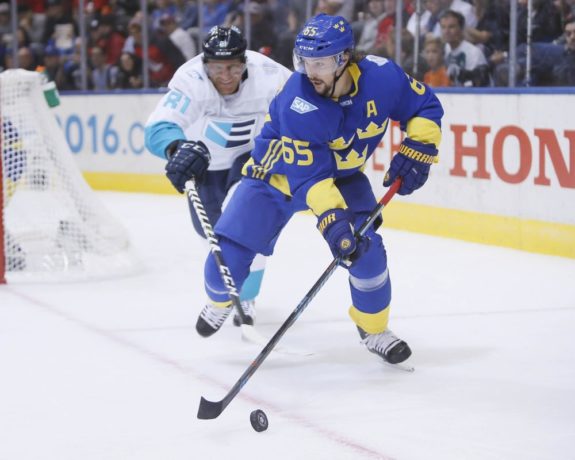
The seven prior Norris winning pairs were Nicklas Lidstrom/Chris Chelios (2008-09 Red Wings), Scott Niedermayer/Chris Pronger (2006-07 Ducks), Ray Bourque/Rob Blake (2000-01 Avalanche), Chris Pronger/Al MacInnis (2003-04 Blues), Chris Chelios/Paul Coffey (1998-99 Blackhawks), Chris Chelios/Doug Wilson (1990-91 Blackhawks), and Tom Johnson/Doug Harvey (1960-61 Canadiens). Four of these pairs won the Stanley Cup together. A few of these didn’t have the two Norris winners in their prime, but that won’t be a problem for the Sharks new pair. They can join elite company if they cap off this season with the franchise’s first Stanley Cup riding the play of their two stars, Brent Burns and Karlsson.
How Will Karlsson Fit in With the Sharks?
In the Locker Room
The Sharks locker room is one of the most welcoming rooms in the NHL. Players love to play in San Jose and the leaders of the team have created an environment that allows players to be their true selves. Evander Kane signing a seven-year extension after only being on the team for a couple months is evidence of the type of environment the Sharks have created.
Kane was seen as a parasite on Buffalo and Winnipeg, but the problems seemed the be those teams and not Kane. He was an instant hit with Sharks players and no one tried to change him or tone him down. Karlsson will surely receive the same welcoming environment. He won’t be looked at to be “the guy” like he was in Ottawa. Instead, he gets to be one of the guys and get back to a winning feeling.
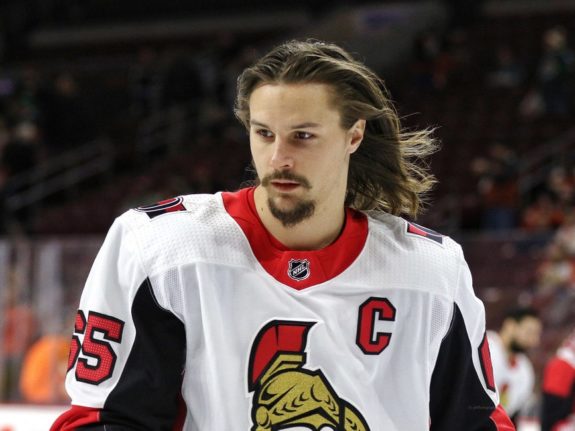
Even Strength Play
On the ice, there are many options for the deployment of Karlsson. Both Karlsson and Burns are right-handed shots so it is unlikely that they play on the same pairing. It doesn’t make much sense to split up Burns and Joakim Ryan since Ryan was able to seamlessly step in to replace veteran Paul Martin. Marc-Edouard Vlasic and Justin Braun have been a pairing for years, but this may be the year they finally break up.
Pairing Karlsson with Vlasic makes the most sense while dropping Braun to the third pairing with Brenden Dillon. Vlasic continues to be overlooked across the NHL but he always gets Norris votes at the end of the season and is heavily respected by his peers. If there were a defensive defenseman of the year award, he would win it every year.
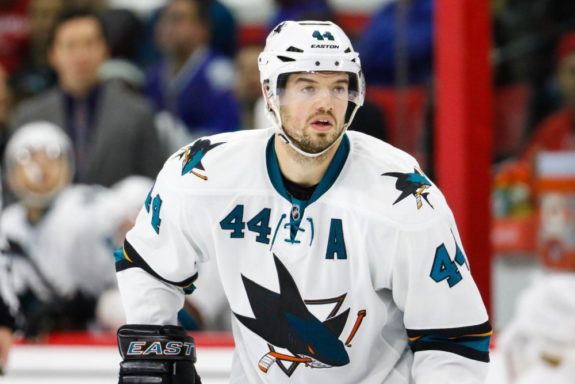
Vlasic is the best defensive defenseman in the league and has been the most important player for the Sharks in the last decade. Pairing him with a generational talent like Erik Karlsson will form one of the best defensive duos of all time. Whichever pairing Vlasic is on will always be matched up against the opposition’s top line and this will leave Burns and Ryan to eat up the lesser competition. There aren’t a better top three defensemen in the league than the trio of Karlsson, Burns, and Vlasic. Many have crowned Nashville as the cream of the crop for defense, but Karlsson propels the Sharks ahead of a defense consisting of P.K. Subban, Roman Josi, and Ryan Ellis.
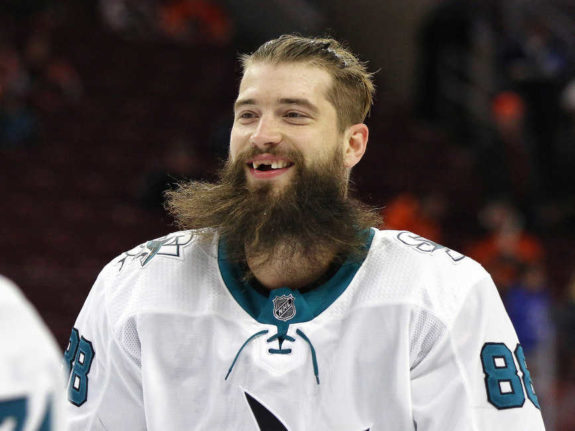
A defenseman’s biggest job will always be defending and transitioning the puck up the ice. The Sharks have defensemen that can all do this in different ways. The days are gone of constantly seeing the puck chipped off the glass into the neutral zone. Karlsson is one of the most gifted passers, particularly on the breakout, that the league has ever seen. He can do this against the best players while Burns will take over of the leftovers.
Braun and Dillon will be able to out-skate the third and fourth lines of the opposition and beat them up the ice on breakouts. The primary job of any defenseman is to get the puck to their forwards and there will be no shortage of that on this revamped Sharks roster. Players like Joe Thornton won’t be expected to get the puck in the offensive zone themselves and in today’s age that isn’t Thornton’s strong suit anyway. He’s still dominant in the offensive zone and now he can save his energy for where it matters.
The goal above is an example of how Karlsson finds his teammates in ways that no other defensemen can. There aren’t many players in the history of the game that can throw a sauce pass over the entire team from behind their own goal line to perfectly spring a teammate on a breakaway. Enjoy.
Power Play
This is the fun part. The Sharks have a problem and it’s a good one to have. There is too much talent to put on the power play. There are two different strategies that they can take. First, they can stack the first power play unit up with the likes of Karlsson, Burns, Thornton, Joe Pavelski, and Logan Couture.
By talent, this would be hard to beat but they can’t stay on the ice for a full two minutes each time a power play comes. It would make more sense for the Sharks to disperse their best offensive players into two power play units that are both as good as any other team’s first unit. Call the units 1A and 1B.
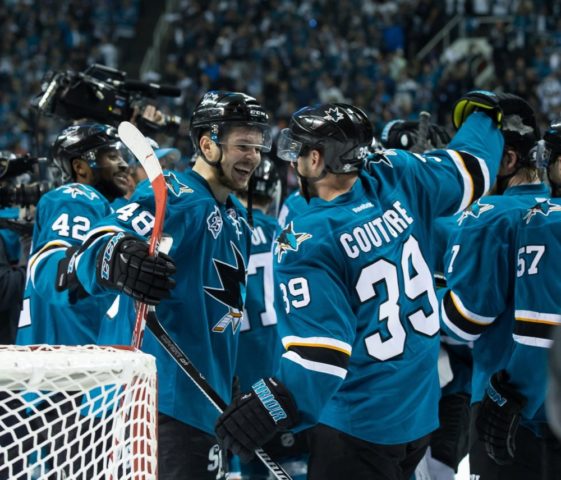
The 1A option could consist of Karlsson, Thornton, Couture, Pavelski, and Timo Meier. 1B would then feature Burns, Kane, Tomas Hertl, Kevin Labanc, and Joonas Donskoi. These units would be able to have a right-handed shot (Burns or Karlsson) and a left-handed shot on the point at all times. The ability to deploy two units of this caliber will keep penalty killers on their heels for a full two minutes. A lot of power plays see a dip with the “second unit”, but with Karlsson and Burns, there can’t be a traditional second unit. Both of them make a top unit on their own.
Sharks fans have a lot to be excited about after what can be called the second biggest trade in franchise history. If they win a Cup with Karlsson it will be hard to not call this the best trade in franchise history. Sorry, Thornton.